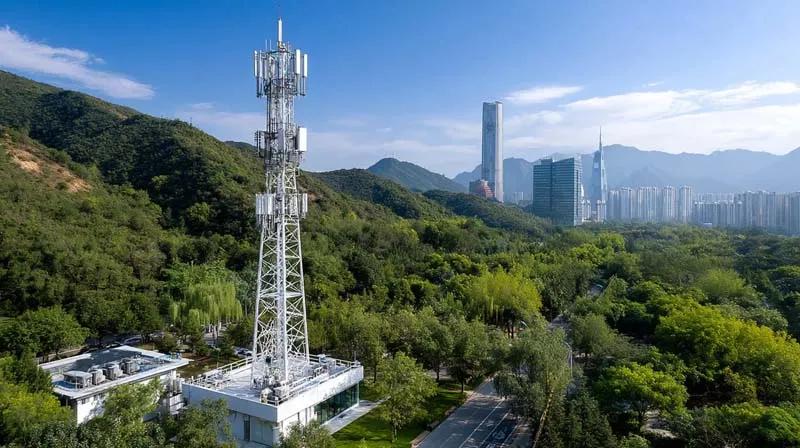The digital era is transforming telecom. 5G networks, booming cloud computing, and surging data center interconnect (DCI) demand unprecedented bandwidth. Yet, fiber resources are scarce. DWDM systems offer a powerful solution. They deliver high-capacity, long-distance transmission. This article explores DWDM systems—their technology, applications, value, and trends. Discover how they empower telecom operators to break through fiber bottlenecks and shape a smarter, efficient future.
How DWDM Systems Work and Their Key Benefits
DWDM systems transmit multiple light wavelengths on a single fiber. This boosts network capacity dramatically. Dense Wavelength Division Multiplexing uses tight wavelength spacing—0.2nm to 1.2nm, typically 100GHz. It supports 40, 80, or even 160 channels across C-band (1525nm-1565nm) and L-band (1570nm-1610nm). Unlike CWDM (with 20nm spacing), DWDM systems pack more channels, achieving tens of Tbps per fiber. They excel in long-distance, high-bandwidth scenarios.
Key technologies drive DWDM systems:
- Cooled lasersensure stable wavelengths for precise signal transmission.
- EDFA amplifiersextend reach up to thousands of kilometers.
- Dispersion compensationcounters signal distortion, ensuring clarity.
Compared to traditional fiber networks, DWDM systems multiply capacity without adding cables. This slashes costs for operators. It’s ideal for 5G networks and long-haul connections, addressing fiber scarcity effectively.
DWDM Systems in Telecom: Key Applications
DWDM systems shine across telecom applications. They support diverse, high-demand scenarios:
- Long-haul networks: DWDM systemsenable cross-regional data transfer. They handle hundreds of Gbps or Tbps reliably.
- Data center interconnect (DCI): Cloud and big data demand high throughput. DWDM systemsconnect data centers efficiently.
- 5G networks: High bandwidth and low latency are critical. DWDM systemssupport fronthaul, midhaul, and backhaul seamlessly.
- Metro and enterprise networks: Using optical add-drop multiplexers (OADM), DWDM systemsensure flexible, secure connectivity.
In China, the DWDM system market reached billions in 2024. Growth is expected through 2030, driven by 5G and data centers. This underscores DWDM systems as a cornerstone of modern telecom.
Breaking the Fiber Bottleneck
Fiber scarcity challenges telecom operators. 5G, IoT, and distributed data centers spike fiber demand. New cables are costly and complex to deploy. DWDM systems solve this. They carry multiple signals on one fiber, reducing the need for new cables. This cuts costs and simplifies expansion.
DWDM systems offer unmatched scalability. Operators can add wavelengths or upgrade modules (e.g., from 100G to 800G). No major infrastructure changes are needed. A single fiber can handle tens of Tbps, far surpassing traditional systems. Additionally, DWDM systems reduce land and resource use. This aligns with global sustainability goals, delivering both economic and environmental wins.
Innovations and Market Trends in DWDM Systems
DWDM systems are evolving rapidly. Recent innovations include:
- High-bandwidth modules: At OFC 2022, 800G modules debuted. They use silicon photonics and high-power lasers for 106.25Gbps per wave. Deployment is expected to peak by 2025-2026.
- Compact designs: Planar Lightwave Circuit (PLC)-based DWDM demultiplexers cut loss and boost reliability. They suit data centers and 5G fronthaul.
- Smart networks: DWDM systemsintegrate OADMs and optical cross-connects (OXC). These enable dynamic wavelength allocation and optimized resources.
- New WDM variants: MWDM, proposed by China Mobile, reuses CWDM wavelengths with a 3.5nm shift. It supports 12 channels cost-effectively for 5G.
The global DWDM system market will grow through 2030. Asia-Pacific, especially China, holds a 43% share. 5G, cloud, and DCI fuel demand. Operators also prioritize low-power, compact DWDM systems for cost and sustainability.
Challenges and Solutions
DWDM systems face hurdles:
- High upfront costs: Cooled lasers and EDFA amplifiers are expensive.
- Technical complexity: Dispersion compensation demands skilled maintenance.
- Market competition: Price wars challenge profitability.
However, solutions are emerging. Modular designs lower costs. Smart management tools simplify operations. Combining DWDM systems with CWDM optimizes budgets. Compact DWDM systems reduce power and space needs, ideal for smaller operators.
The Future: DWDM Systems Lead the Way
DWDM systems are telecom’s backbone. They tackle fiber scarcity and meet 5G, cloud, and IoT demands. With 192-wave systems and 800G modules on the horizon, DWDM systems will dominate. They enable scalable, efficient networks for the digital age.
For operators, DWDM systems are strategic. They boost performance, cut costs, and future-proof networks. Investing now unlocks competitive advantages in a data-driven world.
Leading providers support this shift. For instance, HTF, with over a decade in optical communications, offers cutting-edge solutions. Its HTF HT6000 is a compact, high-capacity OTN system. It uses a CWDM/DWDM platform, supports multi-service transmission, and meets 1.6T+ needs. Ideal for backbone and metro networks, it empowers ISPs and data centers. HTF helps operators build robust, optimized fiber infrastructure for 5G, cloud, and beyond.







